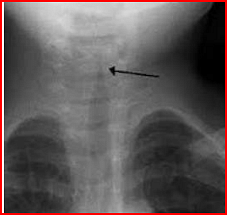Question:
A 3-month-old baby presents with jaundice and clay-coloured stools. Lab investigation reveals that the baby has conjugated hyperbilirubinemia. The liver biopsy shows periductal proliferation. What is the most likely diagnosis?
A 3-month-old baby presents with jaundice and clay-coloured stools. Lab investigation reveals that the baby has conjugated hyperbilirubinemia. The liver biopsy shows periductal proliferation. What is the most likely diagnosis?
Updated On: Jun 19, 2025
Crigler-Najjar syndrome
Rotor syndrome
Dubin-Johnson syndrome
- Biliary atresia
Hide Solution
Verified By Collegedunia
The Correct Option is D
Solution and Explanation
Biliary atresia is the most likely diagnosis given the symptoms and lab results presented by the 3-month-old baby. Here's how we can conclude this:
- Jaundice: The presence of jaundice in a 3-month-old indicates a problem with bilirubin metabolism or bile excretion.
- Clay-colored stools: This is a classic sign of biliary obstruction, as it indicates a lack of bile pigment in the intestines.
- Conjugated hyperbilirubinemia: Elevated levels of conjugated (direct) bilirubin suggest a post-hepatic cause of jaundice, often due to an obstruction in the biliary system.
- Liver biopsy showing periductal proliferation: This indicates an active process in the bile ducts often associated with conditions like biliary atresia, where there is fibrosis and proliferation around the bile ducts.
Considering these findings, the most plausible diagnosis is biliary atresia, a condition characterized by the obliteration or discontinuity of the extrahepatic bile ducts, leading to bile accumulation and liver damage. The other options do not fit as well:
- Crigler-Najjar syndrome: Involves unconjugated hyperbilirubinemia, not conjugated.
- Rotor syndrome and Dubin-Johnson syndrome: Both involve conjugated hyperbilirubinemia, but they do not typically present with clay-colored stools or the histological findings described.
Was this answer helpful?
0
0
Top Questions on Pediatric Disorders
- A 48-year-old man presents with complaints of facial puffiness, frothy urine, and hypertension. He gives a history of infection with hepatitis B. Urine examination reveals microscopic hematuria. The histopathological image of the kidney biopsy shows a spike and dome pattern. What is the diagnosis of this condition ?
- NEET (PG) - 2023
- Pathology
- Pediatric Disorders
- A child presented to the hospital with cola-colored urine, hypertension, and puffiness of eyes. Laboratory investigations were done, and creatinine was 2.5 mg/dL. Treatment was started, and despite treatment, the patient did not improve for the next 3 weeks. The creatinine value increased to 4.5 mg/dL. Which among the following electron microscopic findings will be seen in this patient ?
- NEET (PG) - 2023
- Pathology
- Pediatric Disorders
- A child is brought to the hospital with respiratory distress and biphasic stridor. The radiograph is shown below. What is the diagnosis?

- NEET (PG) - 2023
- Pediatrics
- Pediatric Disorders
- An infant is brought with complaints of excessive watering of the eyes and photophobia. The image is given below. What is the likely diagnosis ?

- NEET (PG) - 2023
- Ophthalmology
- Pediatric Disorders
Chloride level in sweat is used in the diagnosis of which disease?
- NEET (PG) - 2023
- Pediatrics
- Pediatric Disorders
View More Questions
Questions Asked in NEET PG exam
The normal pH of arterial blood is:
- NEET (PG) - 2025
- General Science
Which enzyme is deficient in Gaucher’s disease?
- NEET (PG) - 2025
- General Science
Which of the following cranial nerves is responsible for the motor innervation of the muscles of mastication?
- NEET (PG) - 2025
- General Science
The anticoagulant effect of heparin is monitored using:
- NEET (PG) - 2025
- General Science
The causative agent of malaria is:
- NEET (PG) - 2025
- General Science
View More Questions